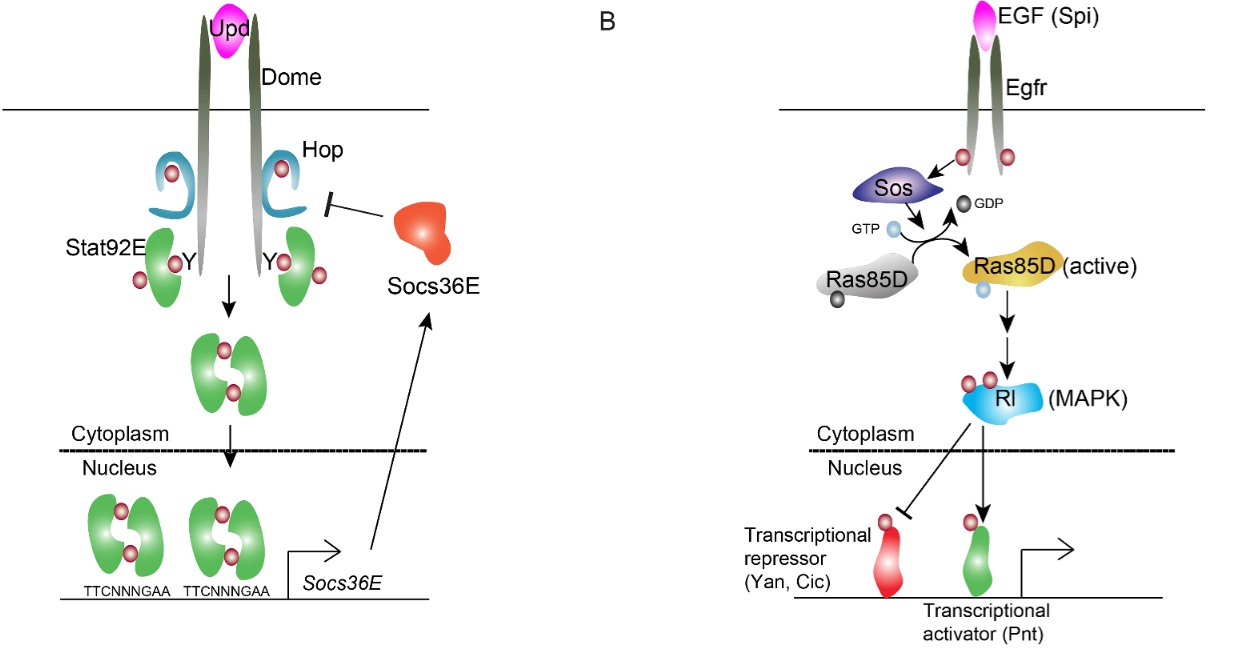
| Developmental and Signaling Pathways: The JAK/STAT pathway: MAPK signaling is elevated in Socs36E mutant clones |
| Amoyel, M., Anderson, J., Suisse, A., Glasner, J. and Bach, E. A. (2016). Socs36E Controls Niche Competition by Repressing MAPK Signaling in the Drosophila Testis. PLoS Genet 12: e1005815. PubMed ID: 26807580 |

|
|
Legend: A) Model of the Drosophila JAK/STAT pathway. The ligand Unpaired (Upd) is produced by hub cells and binds to and activates the receptor Domeless (Dome) on the surface of Cystoblast stem cells (CySCs). This results in activation of the JAK Hopscotch (Hop), leading to tyrosine phosphorylation of Dome. The phosphorylated cytoplasmic domain of the receptor serves as a docking site for a Stat92E dimer. Stat92E is phosphorylated leading to the generation of an active Stat92E dimer that translocates to the nucleus, binds to a consensus TTCNNNGAA site, and alters gene expression. Socs36E is a negative regulator of JAK/Receptor activity. B) Model of the MAPK pathway. The EGF ligand Spitz (Spi) is produced by germ line cells. Spi activates the EGF receptor (Egfr) on the surface of CySCs, which triggers the canonical MAPK pathway. Activation of Egfr leads to the recruitment of Son of Sevenless (Sos), a guanine exchange factor for Ras85D (Ras) that converts Ras from an inactive GDP-loaded form to an active GTP-loaded form. Ras activates Rolled (Rl), a Drosophila MAPK, which inhibits transcriptional repressors Yan and Capicua (Cic) and activates Pointed (Pnt), a transcriptional activator. |
back to Graphic Pathways
Home page: The Interactive Fly © 2016 Thomas B. Brody, Ph.D.
The Interactive Fly resides on the
Society for Developmental Biology's Web server.